Welcome to an insightful exploration of the world of greenhouse farming! In this blog, we will embark on a journey of understanding the Greenhouse chrysanthemum farming cost and profitability. The innovative greenhouse farming method has been gaining popularity due to its ability to provide controlled environments for crops, resulting in increased yields and year-round production.
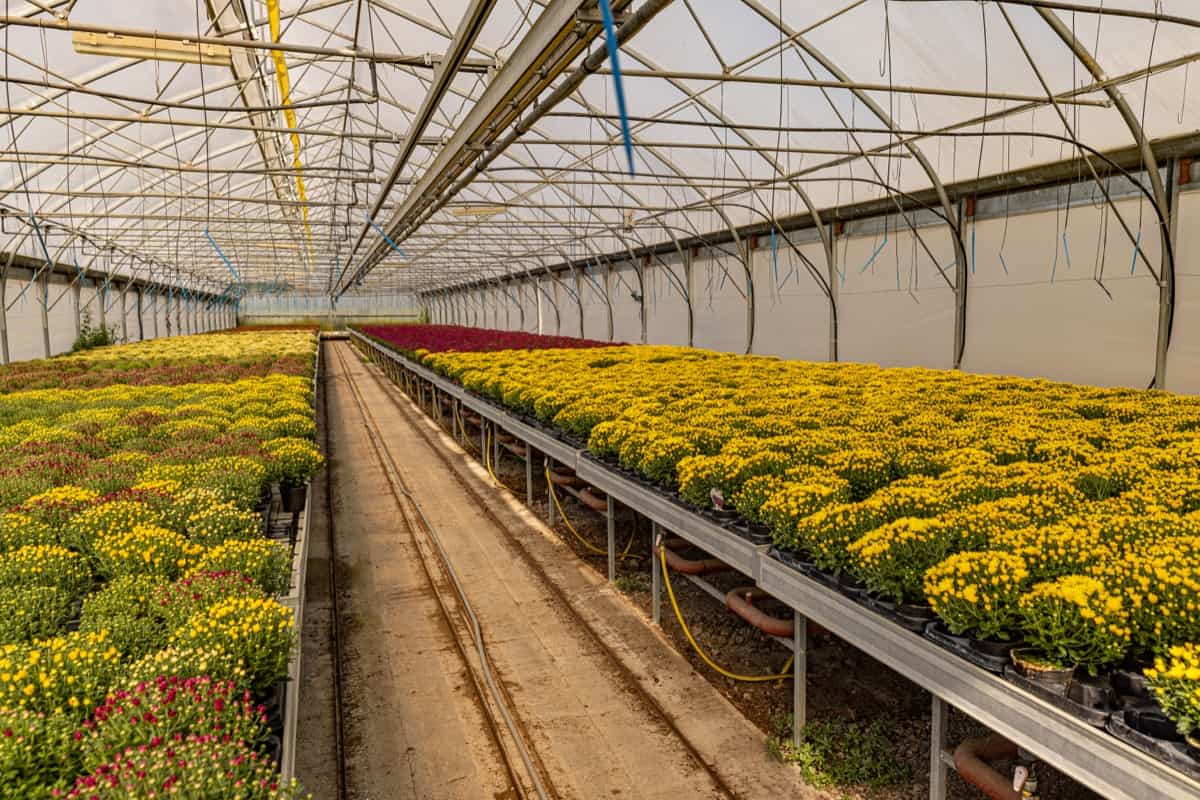
We will dive into accurate data, breaking down expenses such as construction, energy, labor, irrigation, and pest control. Get ready to uncover the secrets behind maximizing profits while maintaining sustainability in this thriving agricultural sector.
What is Greenhouse Farming
Greenhouse farming revolutionizes crop cultivation by creating a controlled environment for optimal growth. With precise regulation of temperature, light, shade, irrigation, and humidity, greenhouses offer a haven for plants to thrive. They play a crucial role in enhancing food production in challenging climates and shielding delicate crops from harsh weather conditions.
Utilizing transparent ceilings, typically made of glass, greenhouses harness natural light while retaining warmth. This technique enables year-round fruit and vegetable production. Greenhouse farming boasts numerous benefits. It also comes with certain limitations. In the realm of Controlled Environment Agriculture, the focus is on consistent and sustainable cultivation of specific crops throughout the year.
Greenhouse production costs and returns involve analyzing profitability and cash flow. Greenhouse crop production requires careful consideration of costs and potential profitability. An enterprise budget assesses profitability, while cash flow is analyzed through a cash flow budget. Enterprise budgets consider variable and fixed costs, while cash flow budgets focus on the inflow and outflow of cash.
In case you missed it: Common Vegetable Pests Identification and Control Methods
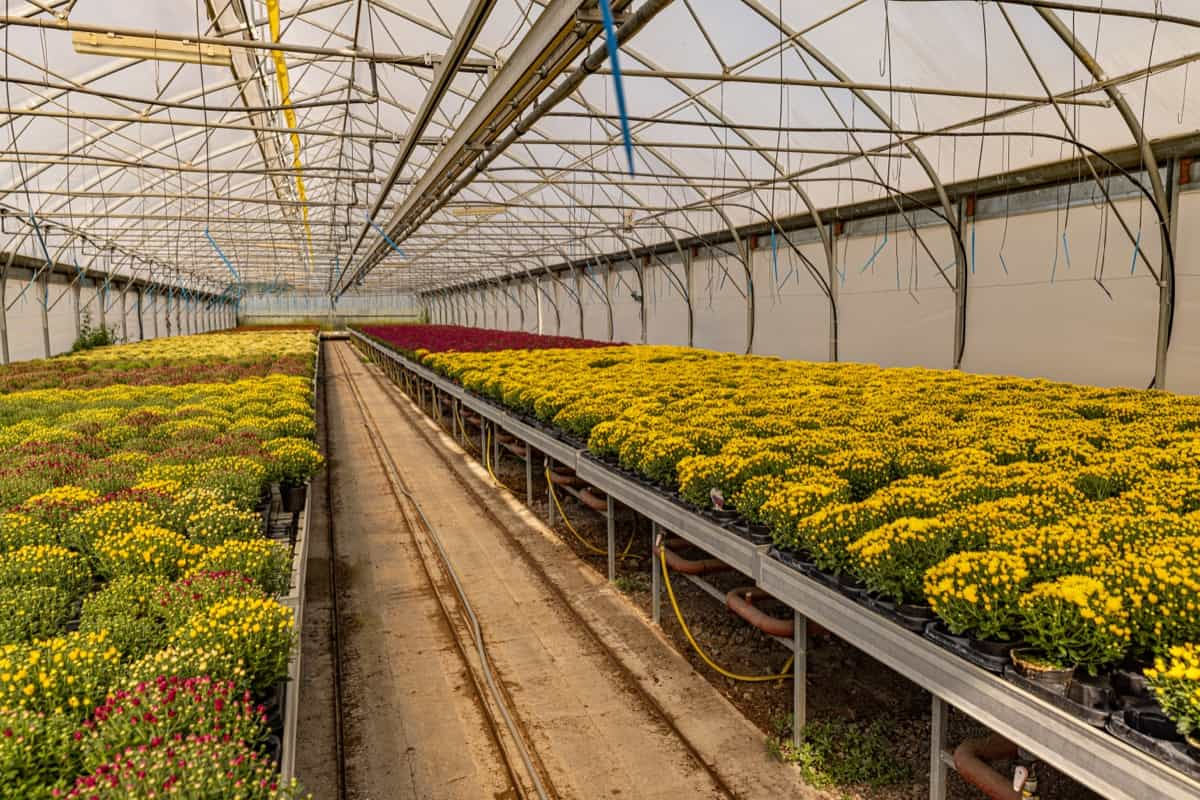
Computation of Individual Cost Components
- Interest on Investment: This represents the payment for using invested capital and is calculated based on the actual paid capital interest.
- Depreciation: Accounts for the decline in the value of assets over time, including buildings and equipment. The formula deducts a 10% allowance from the purchase price.
- Land Value: Determined based on local market conditions and standardized for uniformity.
- Property and Business Taxes: Paid based on the assessed value of the greenhouse operation, excluding non-greenhouse operations.
- Labor Costs: Include wages and benefits for hired workers and estimate the hours the operator and their family members spend.
- Production Materials and Supplies: Covers various items required for production, such as seeds, fertilizers, and packaging materials.
- Heating Cost: Calculated based on accurate cost records from monthly greenhouse heating bills.
- Utility Costs: Include electricity, telephone, and water expenses, allocated proportionately if shared with the operator’s residence.
- Transportation Expenses: Account for vehicle costs and freight charges for hauling produce or supplies.
- Repairs and Maintenance Cost: Covers greenhouse structures, equipment, and machinery repairs.
- Marketing Charges: Include fees for grading, packaging, marketing, and administrative tasks.
- Miscellaneous Costs: Encompass legal and accounting fees, office supplies, insurance, and other specific expenses.
Components of Cost Analysis
- Net Present Worth (NPW): Calculates the difference between the present worth of savings and the investment cost.
- Internal Rate of Return: Determines the discount rate at which the NPW becomes zero.
- Benefit-Cost Ratio: Obtained by dividing the benefit stream’s present worth by the cost stream’s present worth.
- Payback Period: Represents the time to recover the total capital investment through cumulative net cash inflows.
- Break-Even Analysis: The point where revenue equals total costs indicates full cost coverage.
- Interest on Investment: This represents the payment for using invested capital and is calculated based on the actual paid capital interest.
- Depreciation: the amount for the decline in value of assets over time, including buildings and equipment. The formula deducts a 10% allowance from the purchase price.
- Land Value: Determined based on local market conditions and standardized for uniformity.
- Property and Business Taxes: Paid based on the assessed value of the greenhouse operation, excluding non-greenhouse operations.
- Labor Costs: Include wages and benefits for hired workers and estimate the hours the operator and their family members spend.
- Production Materials and Supplies: Covers various items required for production, such as seeds, fertilizers, and packaging materials.
- Heating Cost: Calculated based on accurate cost records from monthly greenhouse heating bills.
- Utility Costs: Include electricity, telephone, and water expenses, allocated proportionately if shared with the operator’s residence.
- Transportation Expenses: Account for vehicle costs and freight charges for hauling produce or supplies.
- Repairs and Maintenance Cost: Covers greenhouse structures, equipment, and machinery repairs.
- Marketing Charges: Include fees for grading, packaging, marketing, and administrative tasks.
- Miscellaneous Costs: Encompass legal and accounting fees, office supplies, insurance, and other specific expenses.
In case you missed it: Glasshouse Farming: For Increased Yields and Reduced Pesticide Use
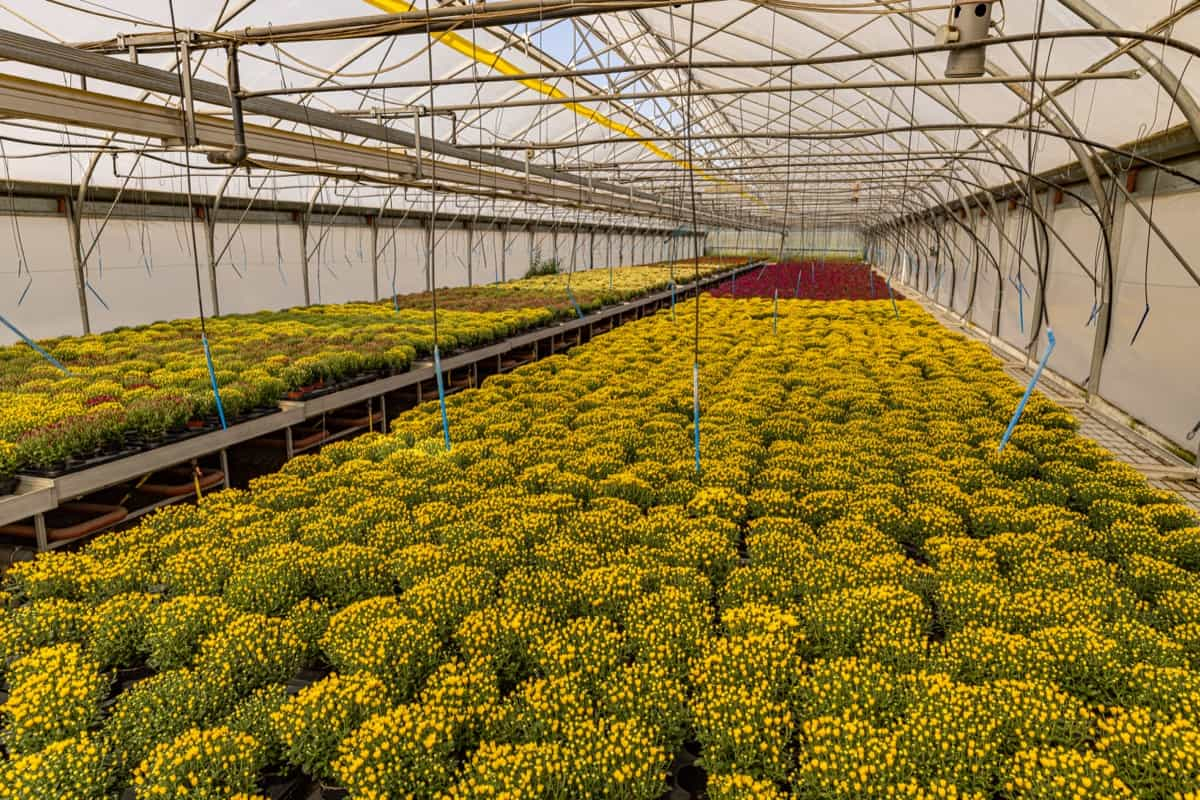
Components of Cost Analysis
- Net Present Worth (NPW): Calculates the difference between the present worth of savings and the investment cost.
- Internal Rate of Return: Determines the discount rate at which the NPW becomes zero.
- Benefit-Cost Ratio: Obtained by dividing the benefit stream’s present worth by the cost stream’s present worth.
- Payback Period: Represents the time to recover the total capital investment through cumulative net cash inflows.
- Break-Even Analysis: The point where revenue equals total costs indicates full cost coverage.
Best Greenhouse Crops to Grow with High Profits and Returns
When it comes to greenhouse crops with high profits and returns, some of the best options include floriculture crops like Gerbera, Dutch Rose, Carnations, Anthurium, Lily, Orchids, Gypsophila, Limonium, Alstroemeria, and Chrysanthemums. In the vegetable and fruit category, profitable options are Color Capsicum, Cucumber, Tomato, Exotic Vegetables, Strawberry, and certain varieties of Pentas. These crops have shown potential for generating significant profits.
Greenhouse Construction and Infrastructure
The cost of greenhouse materials and structures includes the expenses of purchasing and installing the necessary components for greenhouse construction. This includes the greenhouse frame, glazing materials, insulation, and other structural elements. Land preparation and site development costs encompass the activities required to prepare the land for greenhouse installation, such as leveling the ground, clearing debris, and ensuring proper drainage.
The installation and maintenance costs for ventilation, heating, and cooling systems are crucial for maintaining optimal growing conditions inside the greenhouse. These expenses cover the installation of fans, vents, heaters, air conditioning units, and monitoring systems.
Energy Costs in Greenhouse Farming
Energy costs in greenhouse farming include expenses related to electricity and fuel consumption. Heating, lighting, and equipment operation are major contributors to energy usage. Implementing energy-saving measures, such as energy-efficient lighting fixtures and insulation, can help reduce electricity consumption. Additionally, renewable energy options, like solar panels or wind turbines, can generate clean and sustainable energy for greenhouse operations.
Labor Expenses in a Greenhouse Farm
Labor expenses in a greenhouse farm refer to the costs associated with hiring and managing workers for various tasks. These tasks include greenhouse construction, installation of systems, crop cultivation, irrigation, pest control, harvesting, and general maintenance. The labor required depends on the greenhouse’s size and the operations’ complexity.
In case you missed it: Greenhouse Farming in Italy: Crops, 1 Acre Greenhouse Cost, Subsidy, and Loans
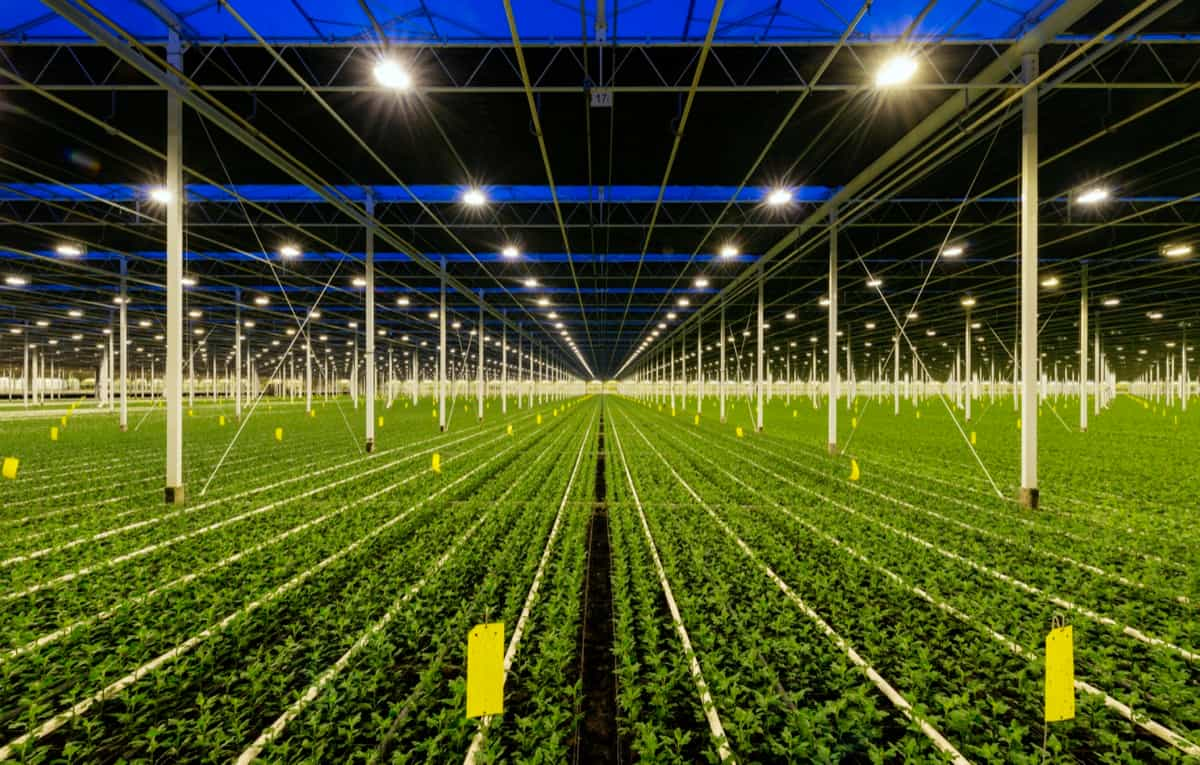
The labor cost for greenhouse construction and installation can range from ₹30,000 to ₹50,000 per 1,000 square meters. The labor cost for crop cultivation, irrigation, pest control, and general maintenance can vary based on the number of workers employed and their wages. On average, labor expenses can account for around 25-35% of the total operating costs in a greenhouse farm.
Irrigation and Water Management Costs
These expenses encompass various aspects, such as installing and maintaining irrigation systems, including drip irrigation or overhead sprinklers. Additionally, the cost of water supply and water treatment should be considered. Efficient water management practices, such as using moisture sensors and implementing water recycling or rainwater harvesting systems, can help optimize water usage and reduce costs.
Pest and Disease Control Expenses
Pest and disease control expenses in greenhouse farming refer to the costs associated with managing and preventing pests and diseases that can negatively impact plant health and productivity. This includes purchasing and applying pesticides, fungicides, and other control measures. Additionally, expenses may arise from implementing preventive measures such as installing insect screens, using biological control agents, and conducting regular monitoring and scouting activities.
Profitability Assessment of Greenhouse Farming
The profitability assessment of greenhouse farming involves evaluating factors such as crop selection, market demand, production costs, and potential revenue. Greenhouse farmers can achieve favorable profit margins by carefully selecting high-demand crops, optimizing production techniques, and controlling expenses. It is essential to consider factors like crop yield, market prices, operational costs, and market fluctuations to ensure the financial viability of greenhouse farming.
Annual Expenses for a Greenhouse Farm
The annual expenses for a greenhouse farm include various costs such as direct costs, labor costs, and overhead costs. Direct costs consist of expenses for seeds, plants, containers, growth media, fertilizers, insecticides, fungicides, and other chemicals. Labor costs involve skilled managerial labor, unskilled labor, and pest control labor. Overhead costs include heating and fuel costs, as well as other general overhead expenses. These expenses contribute to the overall production costs of greenhouse crops and impact the profitability of the farm.
Break-even Point in Greenhouse Farming
The break-even point in greenhouse farming is that the total revenue generated by selling greenhouse crops equals the total costs incurred in their production. It represents the minimum level of sales required to cover all expenses and make neither a profit nor a loss. By analyzing the break-even point, greenhouse farmers can assess the financial viability of their operations. It helps them determine the sales volume needed to cover their costs and make informed pricing, production quantities, and overall profitability decisions.
Profit Margins in Greenhouse Farming
Profit margins in greenhouse farming are a measure of the business’s profitability. They represent the percentage of revenue that exceeds the total costs involved in production. Higher profit margins indicate more efficient operations and better profitability. Calculating profit margins requires comparing total sales with total costs, including direct, labor, and overhead costs.
Returns on Investment in Greenhouse Farming
Returns on investment in greenhouse farming refer to the financial gains or profitability achieved by investing in and operating a greenhouse farm. It influences crop yield, market prices, production costs, and sales revenue. A higher return on investment indicates better profitability and that the greenhouse farm generates good financial returns.
Economic Analysis of Greenhouse Crop Production
Economic analysis of greenhouse crop production involves evaluating the financial aspects and profitability of growing crops in a greenhouse. This analysis includes assessing market prices, sales revenues, costs of production, and profitability indicators such as gross margin, net income, and profit margin.
In case you missed it: Rice Cultivation in Greenhouse: A Profitable Business Plan for Sustainable Farming
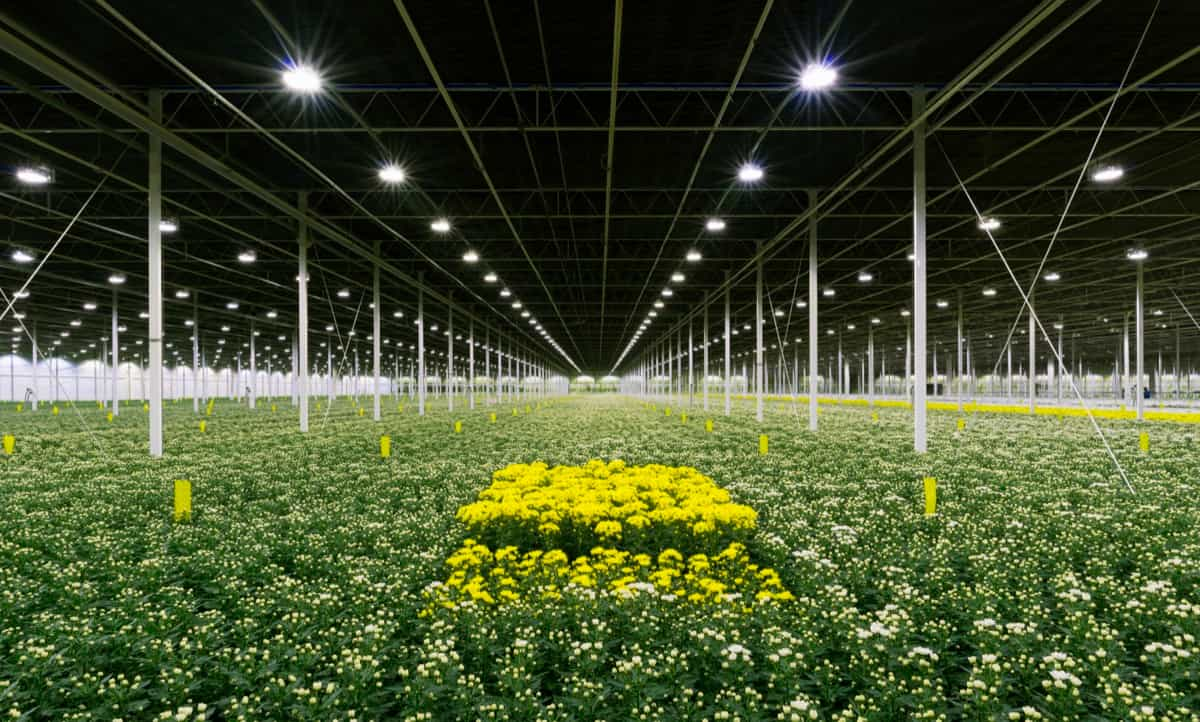
Accurate data on wholesale prices, direct costs (e.g., seeds, containers, fertilizers), labor, and overhead costs (e.g., heating, fuel) are considered. The economic analysis helps greenhouse farmers understand the financial performance of their operations and make informed decisions to optimize their production and maximize profitability.
Market Prices for Greenhouse Crops
Market prices for greenhouse crops determine the revenue generated from their sale. These prices are influenced by factors such as supply and demand, quality of the crops, and market conditions. The prices vary based on the type of crop and container size. Growers typically consider these market prices as they calculate sales revenues and assess the profitability of their greenhouse operations.
Economies of Scale in Greenhouse Farming
Economies of scale in greenhouse farming refer to the cost advantages gained as the size of the farm increases. With larger-scale operations, greenhouse farmers can benefit from lower production costs per unit due to efficiencies and bulk purchasing power.
Comparison of Profitability: Greenhouse Farming Vs. Traditional Field Farming
Greenhouse farming offers advantages such as controlled environments, extended growing seasons, and higher crop yields. This can increase profitability due to higher market prices and reduced production risks. However, greenhouse farming requires significant infrastructure, energy, and technology investments, which can affect profitability.
On the other hand, traditional field farming has lower initial investment costs but is more reliant on weather conditions and faces higher risks of crop losses. Additionally, market prices for field-grown crops may be lower due to higher supply. Profitability ultimately depends on the specific crop, market demand, production costs, and efficiency of operations.
Marketing Strategies for Maximizing Profits
One approach is identifying and targeting market segments based on consumer preferences and needs. This involves conducting market research and understanding the target audience’s demographics, behaviors, and preferences. Creating a strong brand identity and value proposition can differentiate the products and attract customers. Utilizing various marketing channels, such as online platforms, social media, and traditional advertising, helps reach a wider audience. Offering promotions, discounts, or bundles can incentivize purchases and increase sales.
Sustainability and Environmental Impact of Greenhouse Farming
Greenhouses provide a controlled environment that reduces the need for chemical pesticides and herbicides, resulting in lower chemical usage and decreased soil and water pollution. The efficient use of water and nutrients in greenhouse systems minimizes waste and conserves resources. Moreover, greenhouse farming allows for year-round production, reducing the need for long-distance transportation of crops. This reduces carbon emissions associated with transportation and contributes to a smaller carbon footprint.
Greenhouse Chrysanthemum Farming Cost and Profitability
Cost Analysis
| Direct Costs (per unit) | Amount (INR) |
| Seeds and plants | 2,500 |
| Pots and containers | 12,500 |
| Growing media | 13,400 |
| Fertilizer | 6,367 |
| Insecticides | 910 |
| Fungicides | 1,364 |
| Other chemicals | 454 |
| Tags | 8,000 |
| Total direct cost per unit | 45,495 |
| Labor Costs (per unit) | Amount (INR) |
| Skilled managerial labor | 15.00/hour |
| Unskilled labor | 9.60/hour |
| Pest control labor | 12.00/hour |
| Total labor costs per unit | 33,058 |
| Overhead Costs (per unit) | Amount (INR) |
| Heating and fuel | 2.50/gallon |
| Other overhead costs | 0.11/ft²/week |
| Total overhead costs per unit | 49,201 |
In case you missed it: Ultimate Guide to Greenhouse Irrigation and Water Management
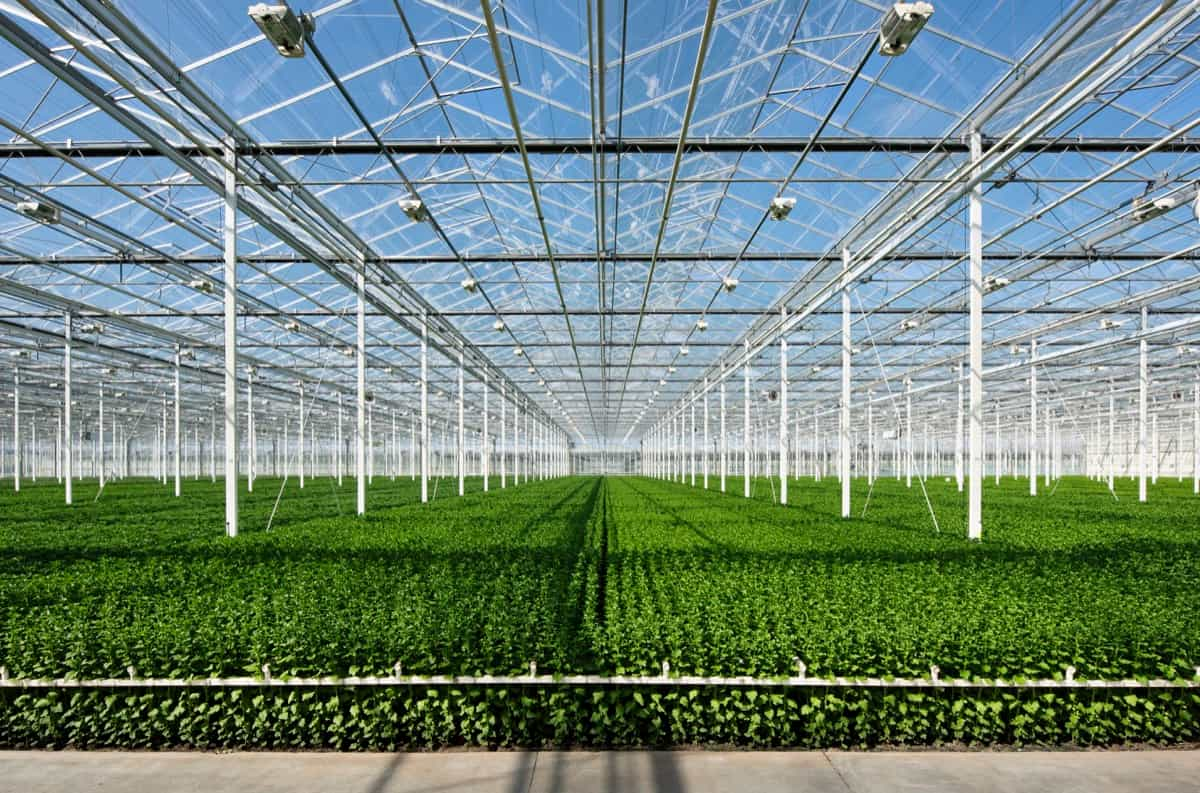
Profitability Assessment
| Size | 1-gallon Chrysanthemums (hardy/garden) |
| Unit price | 5.00 |
| Total sales/returns | 225,000 |
| Total costs | 127,753 |
| Net income | 97,247 |
| Gross margin | 80% |
| Profit margin | 43% |
Sensitivity Analysis
Percentage Change in Labor Cost
- Ranging from -20% to +30%
- Profit margin ranges from 39% to 46%
Percentage Change In Agrichemical Costs
- Ranging from -100% to +100%
- Profit margin ranges from 42% to 44%
Conclusion
Total cost and profitability analysis of greenhouse farming demonstrates its potential as a lucrative and sustainable agricultural practice. Greenhouse farming can offer profitable returns while minimizing environmental impact by minimizing input costs, maximizing yields, and adopting efficient production techniques.
- Types of Pesticides Used in Agriculture: A Beginner’s Guide
- Economical Aquaculture: A Guide to Low-Budget Fish Farming
- 15 Common Planting Errors That Can Doom Your Fruit Trees
- How to Make Houseplants Bushy: Effective Tips and Ideas
- Innovative Strategies for Boosting Coconut Pollination and Yield
- Pollination Strategies for Maximum Pumpkin Yield
- The Complete Guide to Chicken Fattening: Strategies for Maximum Growth
- Natural Solutions for Tulip Problems: 100% Effective Remedies for Leaf and Bulb-Related Issues
- Revolutionizing Citrus Preservation: Towards a Healthier, Greener Future
- Natural Solutions for Peony Leaf and Flower Problems: 100% Effective Remedies
- Maximizing Profits with Avocado Contract Farming in India: A Comprehensive Guide
- Natural Solutions for Hydrangea Problems: 100% Effective Remedies for Leaf and Flowers
- The Ultimate Guide to Choosing the Perfect Foliage Friend: Bringing Life Indoors
- From Sunlight to Sustainability: 15 Ways to Use Solar Technology in Agriculture
- The Ultimate Guide to Dong Tao Chicken: Exploring from History to Raising
- The Eco-Friendly Makeover: How to Convert Your Unused Swimming Pool into a Fish Pond
- Mastering the Art of Delaware Chicken Farming: Essentials for Healthy Backyard Flocks
- 20 Best Homemade Fertilizers for Money Plant: DIY Recipes and Application Methods
- How to Craft a Comprehensive Free-Range Chicken Farming Business Plan
- Brighten Your Flock: Raising Easter Egger Chickens for Beauty and Bounty
- How to Optimize Your Poultry Egg Farm Business Plan with These Strategies
- Subsidy for Spirulina Cultivation: How Indian Government Schemes Encouraging Spirulina Farmers
- Ultimate Guide to Raising Dominique Chickens: Breeding, Feeding, Egg-Production, and Care
- Mastering the Art of Raising Jersey Giant Chickens: Care, Feeding, and More
- Ultimate Guide to Raising Legbar Chickens: Breeding, Farming Practices, Diet, Egg-Production
- How to Raise Welsummer Chickens: A Comprehensive Guide for Beginners
- How to Protect Indoor Plants in Winter: A Comprehensive Guide
- Ultimate Guide to Grow Bag Gardening: Tips, Tricks, and Planting Ideas for Urban Gardeners
- Guide to Lotus Cultivation: How to Propagate, Plant, Grow, Care, Cost, and Profit
- Agriculture Drone Subsidy Scheme: Government Kisan Subsidy, License, and How to Apply Online
- Ultimate Guide to Raising Araucana Chickens: Breed Profile, Farming Economics, Diet, and Care
- Bringing Hydroponics to Classroom: Importance, Benefits of Learning for School Students
- Ultimate Guide to Raising Polish Chickens: Breed Profile, Farming Economics, Diet, and Care
- Ultimate Guide to Raising Australorp Chickens: Profile, Farming Economics, Egg Production, Diet, and Care
- Silkie Chicken Farming: Raising Practices, Varieties, Egg Production, Diet, and Care
- Sussex Chicken Farming: Raising Practices, Varieties, Egg Production, Diet and Care